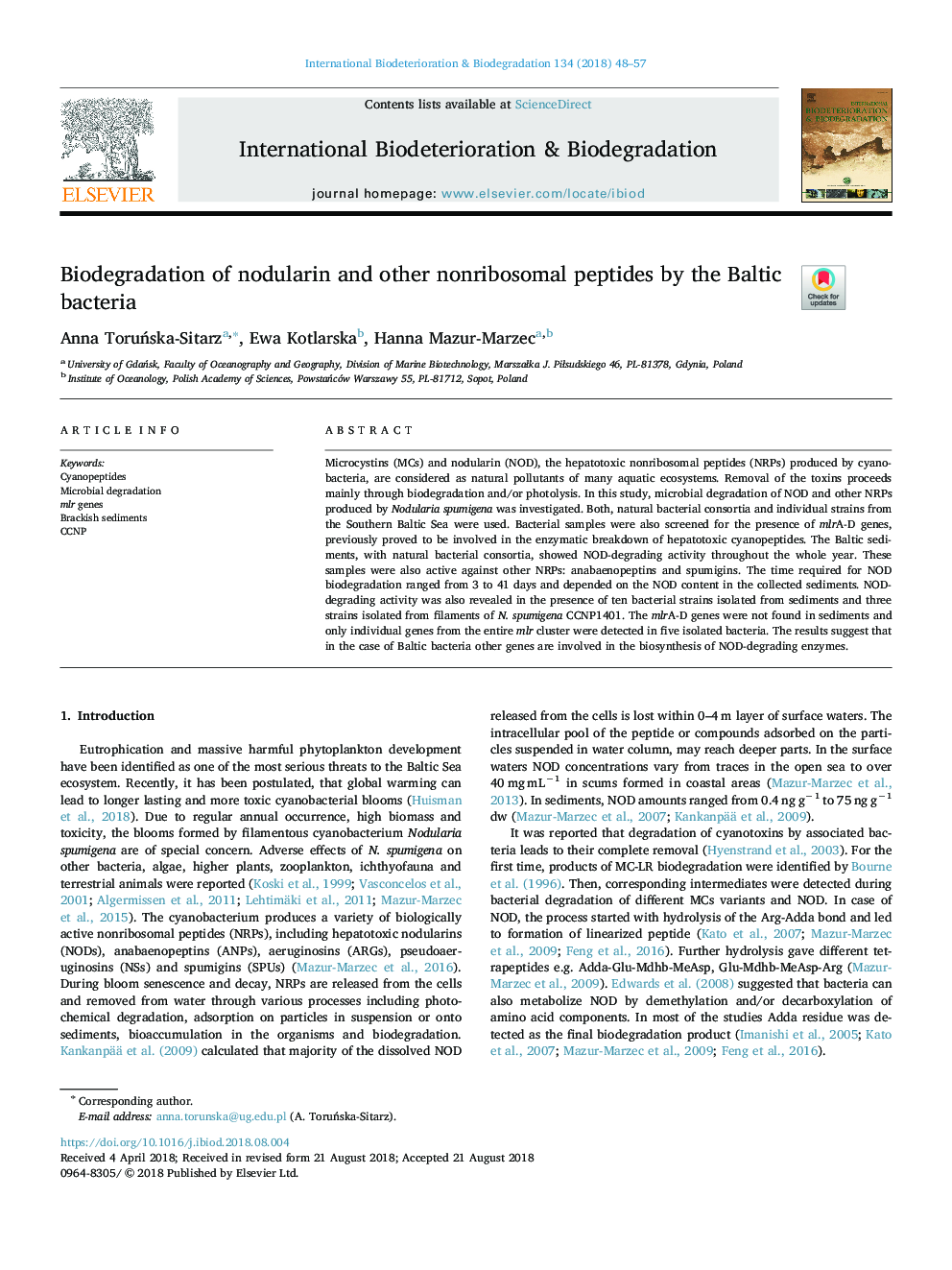| Article ID | Journal | Published Year | Pages | File Type |
|---|---|---|---|---|
| 10107109 | International Biodeterioration & Biodegradation | 2018 | 10 Pages |
Abstract
Microcystins (MCs) and nodularin (NOD), the hepatotoxic nonribosomal peptides (NRPs) produced by cyanobacteria, are considered as natural pollutants of many aquatic ecosystems. Removal of the toxins proceeds mainly through biodegradation and/or photolysis. In this study, microbial degradation of NOD and other NRPs produced by Nodularia spumigena was investigated. Both, natural bacterial consortia and individual strains from the Southern Baltic Sea were used. Bacterial samples were also screened for the presence of mlrA-D genes, previously proved to be involved in the enzymatic breakdown of hepatotoxic cyanopeptides. The Baltic sediments, with natural bacterial consortia, showed NOD-degrading activity throughout the whole year. These samples were also active against other NRPs: anabaenopeptins and spumigins. The time required for NOD biodegradation ranged from 3 to 41 days and depended on the NOD content in the collected sediments. NOD-degrading activity was also revealed in the presence of ten bacterial strains isolated from sediments and three strains isolated from filaments of N. spumigena CCNP1401. The mlrA-D genes were not found in sediments and only individual genes from the entire mlr cluster were detected in five isolated bacteria. The results suggest that in the case of Baltic bacteria other genes are involved in the biosynthesis of NOD-degrading enzymes.
Related Topics
Life Sciences
Environmental Science
Environmental Science (General)
Authors
Anna ToruÅska-Sitarz, Ewa Kotlarska, Hanna Mazur-Marzec,
